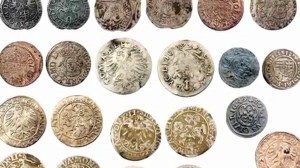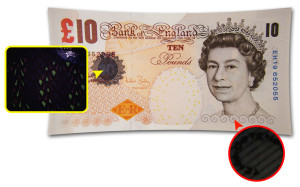20 Amazing Counterfeit Money Facts
We take a look at some of the security measures used to put an end to fake currency.
Counterfeit money has been around for thousands of years – indeed as long as legitimate currency. From Roman times to modern society, fake money has forever been a problem. Printing and distributing bogus cash has always carried a high punishment and, while the death penalty is unlikely to be used for this crime today, a counterfeiter is still likely to receive a hefty prison sentence.
It is estimated that during the American Civil War, one-third of all currency in circulation was fake, paving the way towards new counterfeit measures to ensure fraudulent notes could not enter circulation. The introduction of a national currency in the USA in the 19th century helped a great deal in clamping down on phoney money, but it did not eradicate it. Tackling fake currency is an extremely difficult process, and over the years various methods have been adopted to detect ever-improving forged notes.
 Modern banknotes employ a variety of security measures to ensure that they cannot be replicated easily. Most governments around the world use microprinting, holograms, UV-lit text and more to prevent fraudulent notes entering circulation. However, as long as currency continues to be used, it’s unlikely that counterfeiting will stop.
Modern banknotes employ a variety of security measures to ensure that they cannot be replicated easily. Most governments around the world use microprinting, holograms, UV-lit text and more to prevent fraudulent notes entering circulation. However, as long as currency continues to be used, it’s unlikely that counterfeiting will stop.
History of money
Around 600 BCE the Greek region of Lydia was the first to use coins to represent money, which sparked a wave of forgeries involving the mixture of base metals with gold or silver. In the seventh century China made the world’s first paper currency with wood from mulberry trees, and attempted to prevent counterfeiting by protecting mulberry forests with armed guards and sentencing forgers to death.
 In the USA, a national currency was adopted in 1863 and, two years later, the Secret Service was tasked with countering forged money. In 1996, the US introduced new standards for paper cash, like microprinting, to prevent phoney notes being produced. However, counterfeiting remains a big problem. In 2009 the Bank of England revealed that, despite anti-forgery measures, 566,000 counterfeit notes and up to 40 million GBP 1 coins were in circulation in the UK.
In the USA, a national currency was adopted in 1863 and, two years later, the Secret Service was tasked with countering forged money. In 1996, the US introduced new standards for paper cash, like microprinting, to prevent phoney notes being produced. However, counterfeiting remains a big problem. In 2009 the Bank of England revealed that, despite anti-forgery measures, 566,000 counterfeit notes and up to 40 million GBP 1 coins were in circulation in the UK.
10 GBP facts
 Print – UK banknotes are printed on special paper that has raised print in certain areas, like the words ‘Bank of England’.
Print – UK banknotes are printed on special paper that has raised print in certain areas, like the words ‘Bank of England’.
Quality – The print quality of the letters is sharp and defined. If the edges of letters and numbers are blurry then you’ve got a fake.
Hologram – UK banknotes have a hologram that, when tilted, switches between a picture of the goddess Britannia and the value of the note.
Watermark – Hold the note up to the light and the Queen’s portrait will appear as a watermark image.
Ultraviolet – Shine a UV light on a UK banknote and its value will appear in bright red and green.
Microletters – The value of the note, in this case GBP 10, is written in tiny lettering beneath the portrait of the Queen.
10 USD facts
 Microprinting – Since 1990 US bills have carried tiny, crisp writing that is almost impossible to copy on fake bills. On USD 10 notes this reads ‘USATF.M’, and so forth for other denominations.
Microprinting – Since 1990 US bills have carried tiny, crisp writing that is almost impossible to copy on fake bills. On USD 10 notes this reads ‘USATF.M’, and so forth for other denominations.
Glow – When under a UV light, the security thread will glow a certain colour. For the USD 10 bill, the thread glows orange.
Ridges – The portrait on the bill has raised ridges that cannot be reproduced by counterfeit printers easily.
Ink – Tilting the bill will reveal colour-shifting ink. Old bills would turn from green to black, but more recent ones change from copper to green.
Strip – A security thread runs from the top to the bottom of the note which will show the text ‘USA’ and the denomination of the bill when held up to the light.
Watermark – If the bill is held up to the light, it will show a watermark of the person whose portrait is on the bill. For the USD 10 bill, this is the first secretary of the treasury, Alexander Hamilton.
